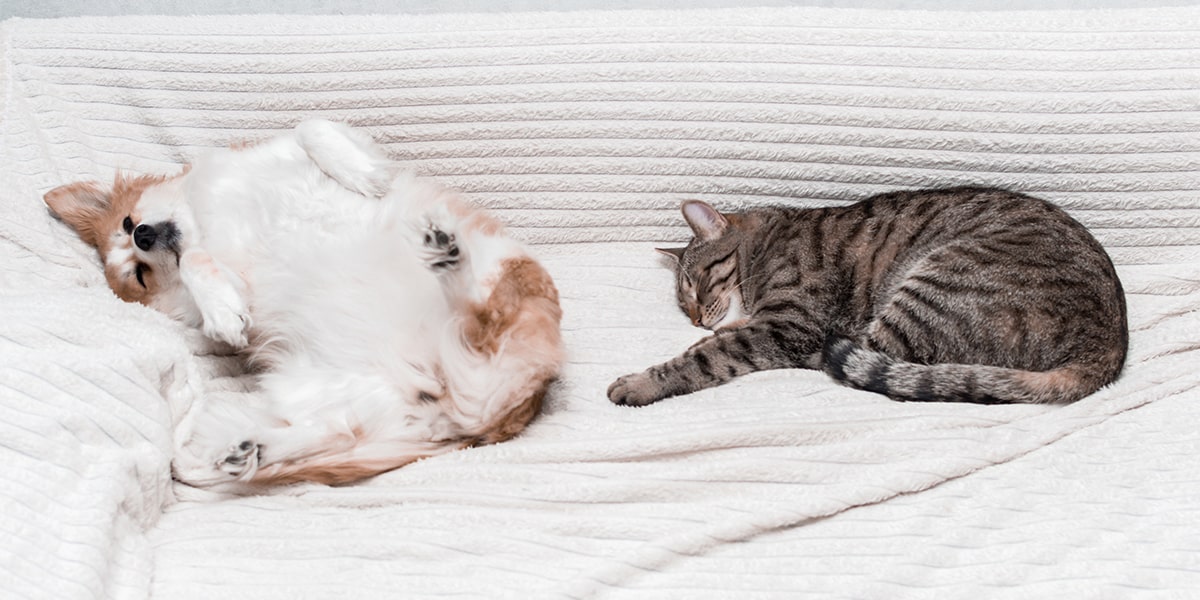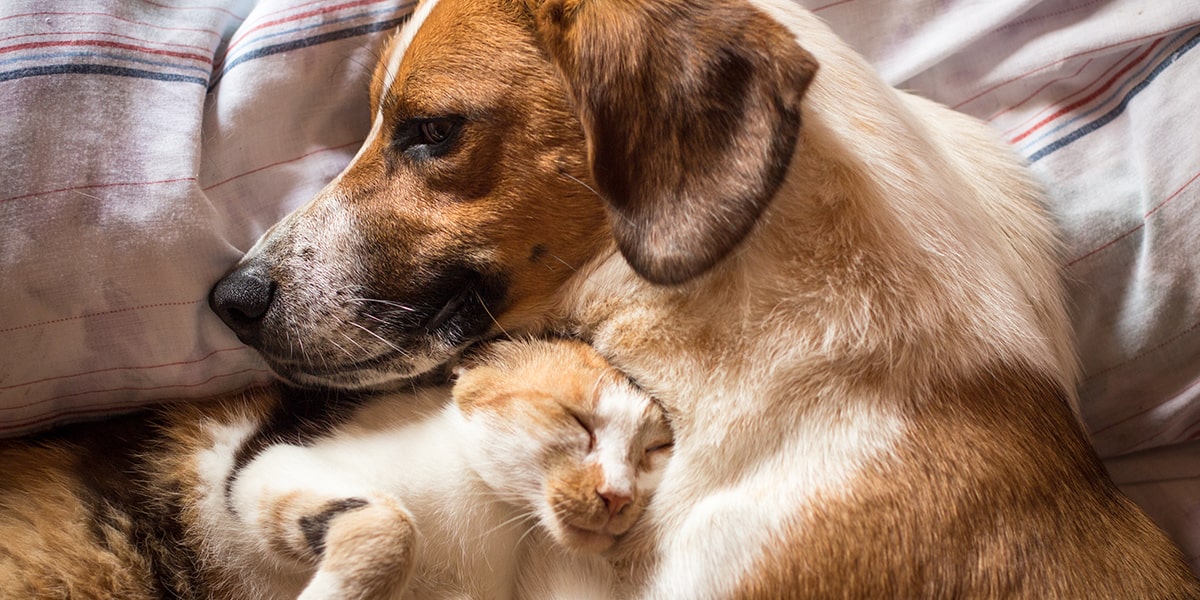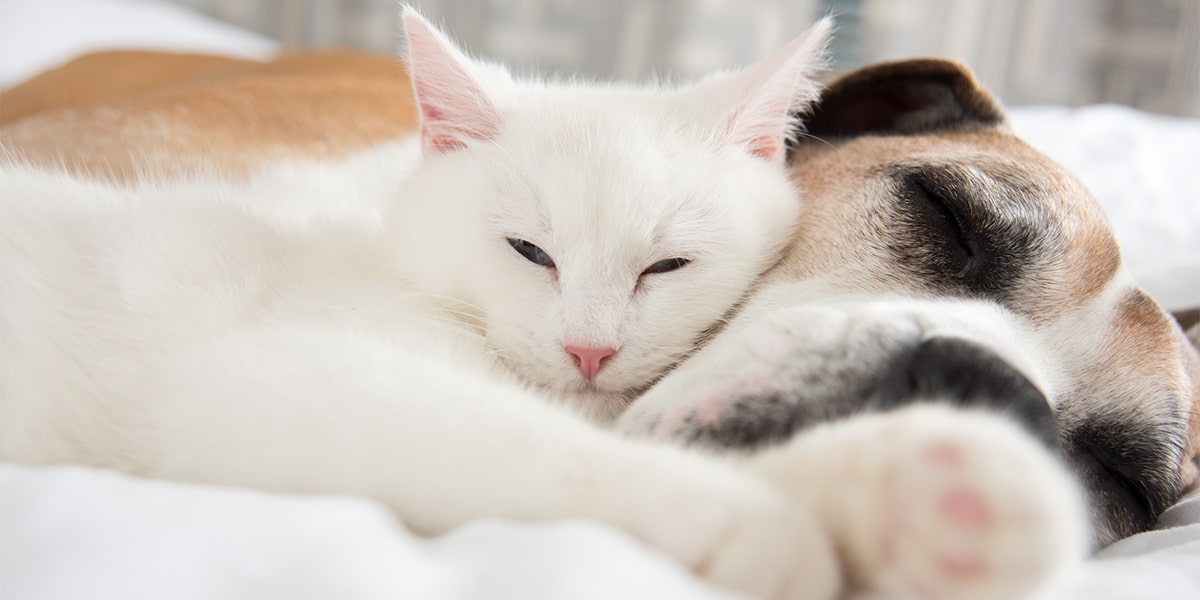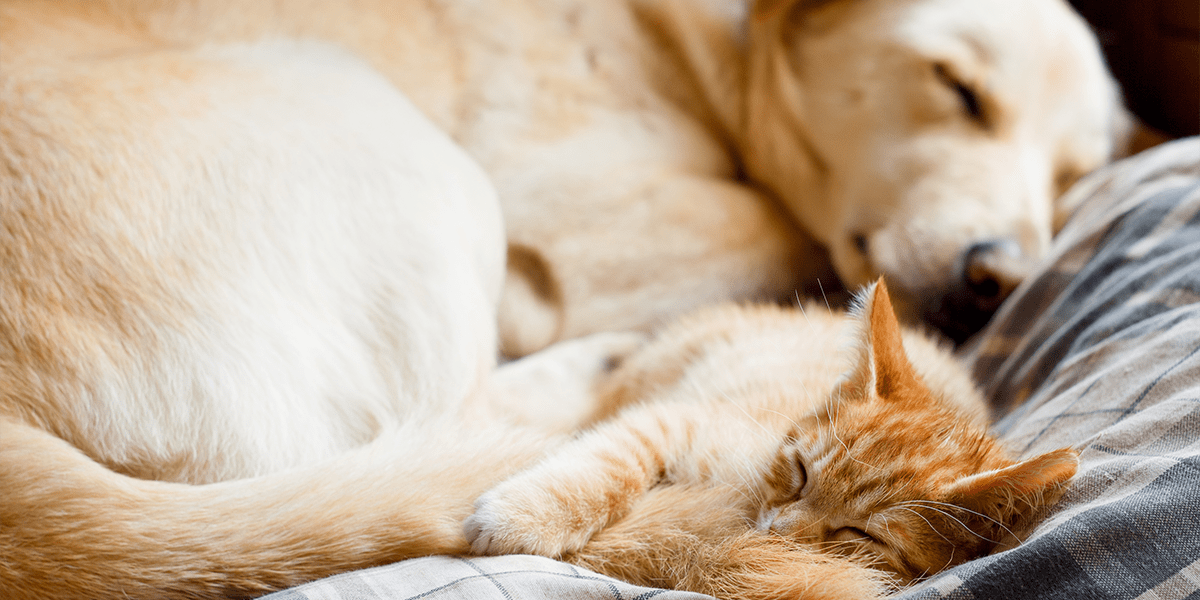How to introduce a dog and cat
Dogs and cats might be enemies in the cartoon world, but some can live in harmony together in real life. It's important that if you're thinking of introducing a dog and cat to each other that you do so very carefully.
If you already have just a cat, we wouldn’t recommend taking on a dog to ‘keep them company’, as cats are naturally solitary and usually prefer to be the only pet in the household. However, we know that sometimes it’s unavoidable to keep a dog and cat in the same household. Our vets have put together their advice so you can do this safely with as few fall-outs as possible.
What to do before you introduce a dog and cat
Whether you have a cat and are introducing a new dog to the family, or you have a dog and are introducing a cat, it’s important to know how your current pet will react to a new arrival. Often, introducing a new cat to a dog or vice versa will be easier if one or both of them have been familiar with the other species from a young age.
If they weren’t raised with a dog or cat when they were young, you can follow our tips below to work out whether your pet will be comfortable with a new friend:
- If you already have a cat: pay close attention to how they act around dogs that pass by the house or they meet out and about. If they’re fairly confident, that can be a good sign. If your cat is generally nervous, has had bad experiences previously, or has medical problems related to stress already, it might be best for them to stay as the only pet. Introducing a new dog into their home could cause them a huge amount of stress and make them ill.
- If you already have a dog: when you’re out and about walking and they see a cat, do they try and chase them? Ideally, your dog will walk past cats or other small animals and not really pay much attention to them. If you have a particularly excitable dog or one with a high ‘prey drive’ who likes to chase them, it might be best not to get a cat.
You know your pet best and if they are particularly sensitive or chase other animals and pets, then a new family member may not be ideal.
Have a chat with your vet or vet nurse if you’re thinking of getting another pet as they’ll be able to offer lots of advice and guidance. Some dogs are more prone to chasing small animals, including cats, so do plenty of research on your breed of dog and once you’ve found one check up on their individual personality, too, before making any introductions.
Sometimes if you get your new cat or dog from a rescue centre, the centre might be able to tell you about the pet’s history. Some dogs will have been, or can be, ‘cat tested’ which means the rescue centre will see if they would be compatible in a home with a cat. Your prospective pet may also have a history of living with a cat or dog previously, which is ideal.
Step one: preparing to bring your new pet home

You might need to make a few changes to your current pet’s set-up at home. These are to make sure both your current pet and new one can both settle in.
- Make sure you’ve set up the ideal environment for your dog and the ideal environment for your cat. It’s important to meet all their needs so they both stay happy.
- Set up separate safe spaces for both pets. They each need a place they can go to chill out if things get too much, without being disturbed by the other pet. A room with lots of high places or things to hide under is good for cats who can jump up to feel out of harm’s way. Baby gates can be a simple but effective way of keeping your dog out of your cat’s space.
- Keep all their food, water and toilet areas away from each other and out of reach of the other pet! Cats prefer to eat on their own so this will stop your cat from getting stressed. Consider using a microchip feeder to prevent them pinching each other’s food. Make sure you’ll be able to clean up their litter tray as soon as possible after your cat uses it and that it’s out of your dog’s way.
- As well as them having their safe places, make sure there’s lots of options for both of them to relax around the house without getting in each other’s way. For example, tiered cat trees or wall-mounted cat shelves provide an ideal escape route for your cat and will help them feel safer. When they’re higher up they can safely survey what’s going on below.
Step two: scent swapping

In an ideal world, your dog and cat should be given a few days to get used to each other’s scent. This will help them get used to each other before they meet – a bit like having a phone call with someone before we meet them face-to-face!
If you’re getting your new pet from a rescue centre, they may let you bring in blankets with your current cat or dog’s scent on (for example, a blanket they like to sleep on or a favourite toy). They can put this in with your new pet who will be able to get used to the scent of your current pet.
A more direct way of ‘scent swapping’ is to collect your pet’s scent on a new cloth. To do this, take a clean soft cloth and gently rub it around your cat’s cheek (scent glands). You may find your cat is more than willing to do this for you! Do the same with your dog but under their armpit. Then put each cloth in the opposite pet’s bed.
Step three: the first meeting

When it’s time to bring your new pet home, don’t put them both in the same room and expect them to get along straight away. Just like us, our pets need time to adjust to any newcomers.
- Try to keep as calm as possible and create a calm environment in your house to introduce your pets in. It’s probably best to only have yourself and possibly another adult in the house when they first meet.
- When they first come home, keep your new pet in their safe room, where they can explore freely and start to familiarise themselves with their new surroundings. Keep your resident pet away at this stage.
- Once your new pet knows where they can go to hide, allow the pets to be aware of each other in their separate spaces.
- Make sure there is a barrier between your cat and dog – this is where a baby gate comes in handy! They’ll be able to see and smell each other but still feel safe.
- Still keep your dog on their lead at first and watch out in case they get over excited or lurch forward to chase.
- Give them both time to adjust and settle. You can use food rewards to distract and reward them for calm behaviour, but plenty of fuss and praise is always good too. If you’re using food rewards, make sure that both pets are getting some and that they’re not close together, so they don’t think the other might steal their treats.
- Once both pets seem calm, you can take your dog off the lead, but still keep them separated by the baby gate.
You might need a few meetings like this at first to give your pets a chance to get used to one another in their own space. Soon, you’ll get to a point where they both seem calm and comfortable together.
Step four: removing the barrier

Once your dog and cat are happy in each other’s company, you can take the barrier away. It’s best to put your dog back on their lead at first, just in case they try to chase your cat. Make sure escape routes are clear for your cat.
Again, try to keep everything as calm as possible. It’s best not to have the TV on in case of loud, sudden noises that could startle your pets. At this stage, don’t give your pets treats as they could fight over them. Remember to give gentle and calm praise to both pets when they’re settled.
Once you are sure that your dog won’t chase your cat, you can let them off the lead and let them share the same space, supervising closely. Watch their body language to make sure they are still happy and comfortable.
Even when both pets are happy to be in the same space as each other, they will still need places they can go to be alone. You should always supervise your cat and dog when they’re together just in case.
Our top tips for introducing a cat and dog
- Cats or dogs that are well-socialised and used to the other species from a young age are less likely to be stressed out by living with them.
- Make sure both pets are fully vaccinated before introductions.
- Try to scent swap first if you can as it means seeing each other for the first time won't be as big a surprise!
- Keep your new pet separate for a few days and continue to scent swap while they settle in.
- Always keep meetings as calm as possible.
- Watch them closely and monitor for any changes in their body language.
- Keep them separate for playtime and mealtime so neither pet gets over-excited around the other.
- Be patient. Individual cats and dogs will take to new situations at their own pace.
- Never force your pets to spend time together. If they start to become worried or stressed, let them go to their safe space.
- If you have a cat and a dog who really don't get along, speak to your vet who can refer you to a veterinary behaviourist to give you advice.

